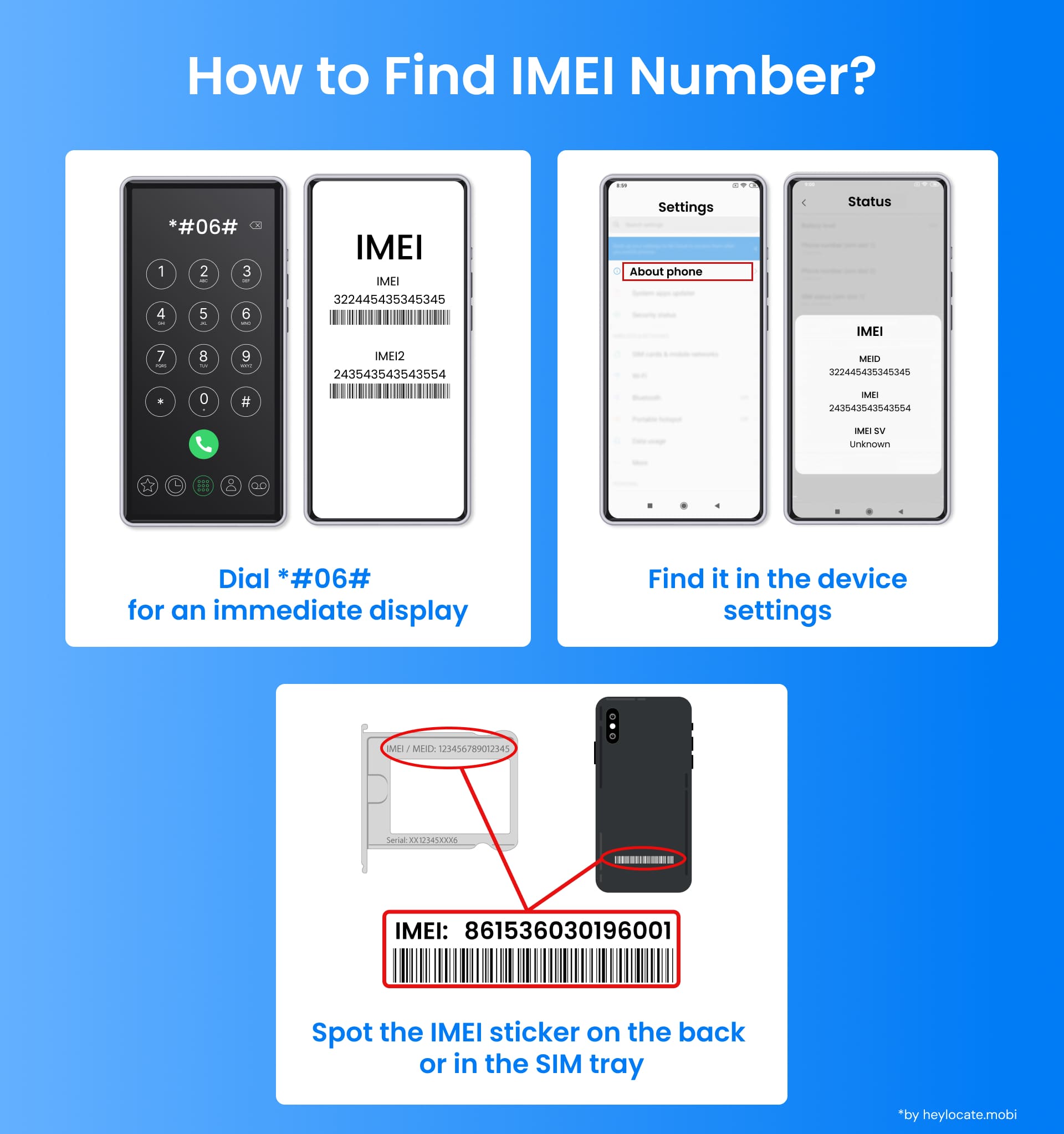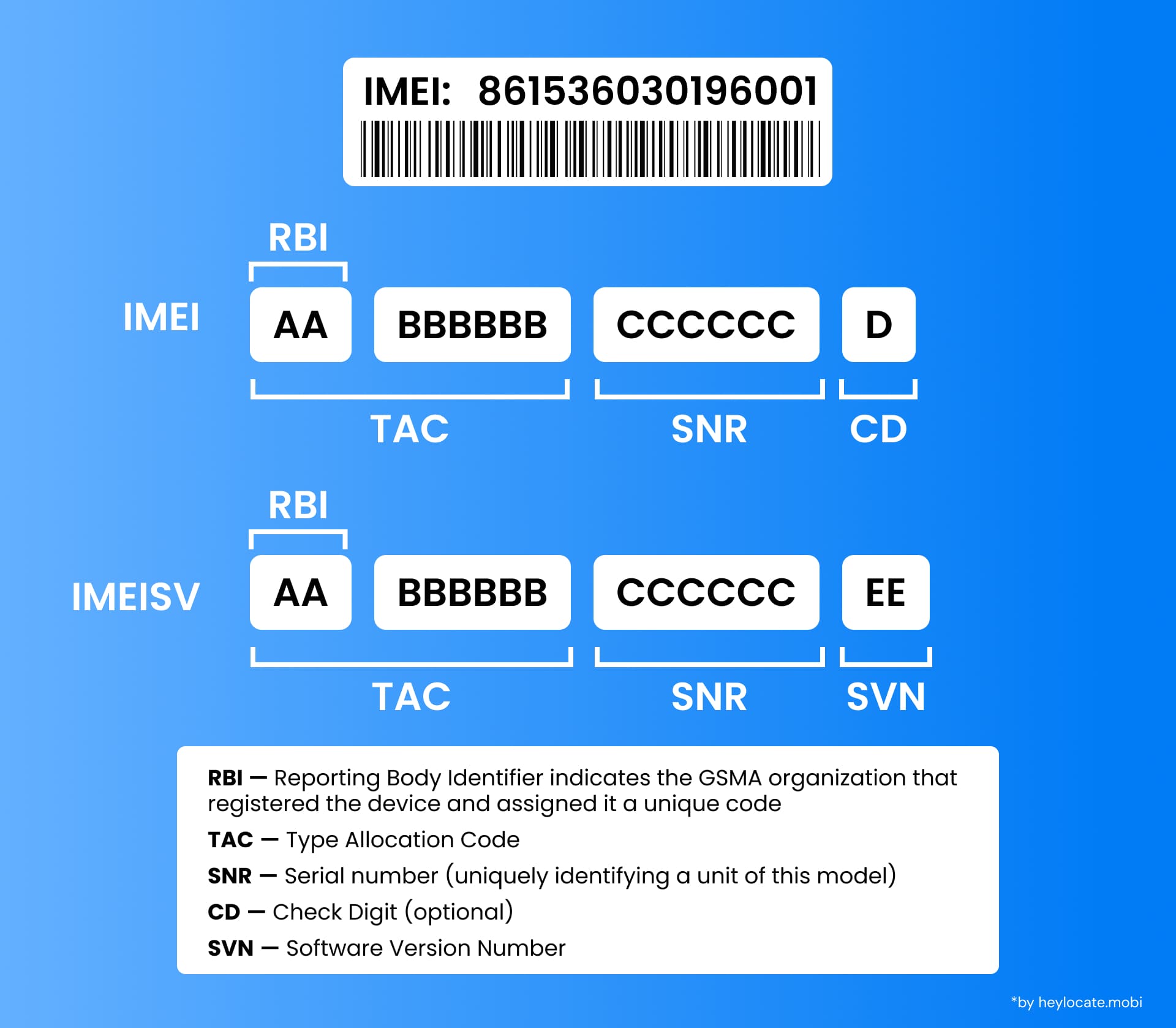International Mobile Equipment Identity (IMEI)
What is IMEI?
The International Mobile Equipment Identity (IMEI) is a distinctive 15-digit code assigned to each mobile phone or cellular device, functioning akin to a serial number for identification and tracking purposes within a network.
Structure and Purpose
IMEI structure encompasses 14 digits denoting the device’s particulars and a singular check digit for validation. This code encapsulates data regarding the device’s origin, model, and serial number, facilitating various functionalities:
- Network Security: IMEI numbers are crucial for GSM networks to authenticate devices seeking connection. In instances where a device is reported stolen and subsequently blacklisted based on its IMEI, network operators can thwart unauthorized usage by denying service.
- Device Tracking: Law enforcement authorities leverage IMEI numbers to track and pinpoint the location of mobile devices, aiding in investigations pertaining to theft and criminal activities.
- Theft Prevention: The blacklisting of IMEI numbers acts as a deterrent against theft, as pilfered phones become inoperable on legitimate networks.
Finding Your IMEI
Locating the IMEI number of a device can be accomplished through various means:
- Dialing *#06# on the phone’s keypad, which prompts the display of the IMEI.
- Exploring the device settings, though the specific location might vary based on the phone model and operating system.
- Identifying a sticker bearing the IMEI, typically found on the device’s rear or within the SIM card tray.

IMEI and Network Security
Regarding network security, GSM networks heavily rely on IMEI numbers for device authentication and theft deterrence. Upon a device’s connection to a network, the IMEI is relayed to the network operator for validation. In cases where a device is flagged as stolen and its IMEI blacklisted, the network can effectively block service to that device, rendering it inoperative within the network.
It’s noteworthy to distinguish between IMEI and International Mobile Subscriber Identity (IMSI) – while the former identifies the device itself, the latter is specific to identifying the subscriber.
IMEI and Regulatory Frameworks
Numerous countries enforce legal frameworks to regulate IMEI manipulation and curb device theft. These laws safeguard consumers and discourage the sale and usage of stolen devices. In certain jurisdictions, altering or tampering with IMEI is considered a criminal offence, compelling manufacturers and service providers to maintain accurate IMEI records.
Blocklists for Stolen Devices
Service providers employ IMEI numbers to block stolen devices by adding them to blocklists. This prevents stolen devices from accessing networks. Efforts to establish shared international registries for blocking stolen devices rely on international collaboration and information sharing among countries.
IMEI Structure and IMEISV
IMEI numbers adhere to a specific format, offering insights into device manufacturer, model, and origin. Divided into sections like the Type Allocation Code (TAC), IMEI includes a check digit calculated using the Luhn algorithm to ensure validity and prevent errors.

Law Enforcement and Intelligence Utilization of IMEI
Law enforcement and intelligence agencies leverage IMEI numbers to track and identify devices involved in criminal activities. By tracing IMEI numbers, authorities ascertain device locations and gather evidence for investigations, aiding in resolving cases of theft, fraud, and other mobile device-related crimes.
References
- “3GPP TS 22.016: International Mobile Equipment Identities (IMEI)” (ZIP/DOC; 36 KB).
- GSM Europe, “GSME proposals regarding mobile theft and IMEI security”, 2003-06
- International Mobile Equipment Identity – Wikipedia
- What is an IMEI number and what is it for? | Thales Group
- What Is An IMEI Number And How to Find it | T-Mobile
- What is an IMEI number & what is it used for | Mint Mobile